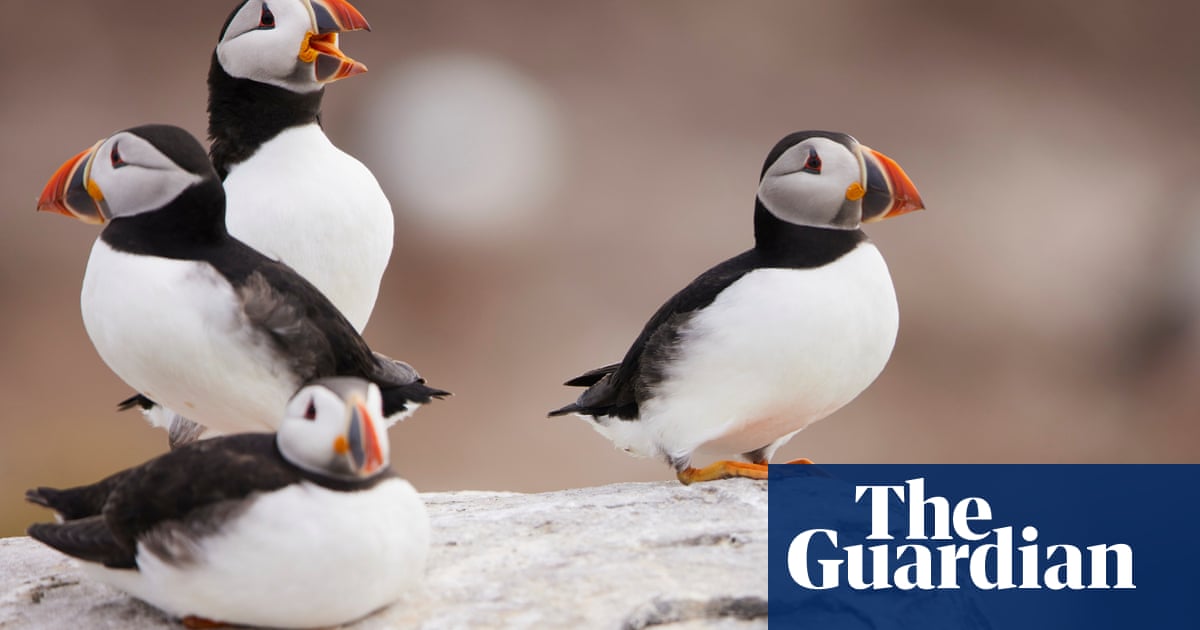
“This is what it’s all about,” said Richard Bevan, beaming. “To see this many seals when 10 years ago there would not have been any.”
Bevan is a zoologist surveying the shore of Inner Farne island off the coast of north Northumberland. As far as the eye can sea there are about 100 female grey seals and their dependant pups. In the water hopeful males splash about, none more obvious than a dominant bull with a roman nose and scar. “We’ve called him Pacino,” said a ranger.
It is a joyous, gloriously noisy scene and, experts say, a vivid illustration of a British conservation success story.
The Farne Islands are home to one of England’s largest grey seal colonies and have the longest history of seal pup counting. This week National Trust rangers – helped for the first time by thermal imagery technology – were completing a crucial count, which did not take place last year because of the pandemic.
In 1956 there were 751 pups counted. In 2019 there were 2,823. This year, the expectation is that there will be many more, making it a record year for grey seals on the islands.
“It is looking that way,” said Bevan, a senior lecturer at Newcastle University. “Some of the outer island groups look incredibly dense.”
The grey seal was the first animal to be protected by modern UK legislation with the Grey Seals Protection Act of 1914. About 50% of the world population now lives in British and Irish waters.
The recent Storm Arwen had a devastating effect on some UK grey seal colonies with more than 800 pups estimated to have died at St Abb’s Head in the Scottish borders. Remarkably, the Farne Islands colony appears relatively unscathed.
The population density feels almost otherworldly, Bevan said. “It happens in Antarctica, it happens in the Galapagos islands.” It also happens in the UK. “This is on our doorstep and it is phenomenal.”
There is a magic about the animals, said Bevan. “I love grey seals and I love the sound that they make. It’s ethereal… this low keening call. Ooooughoooough…. especially when its misty and you can’t see anything.
“To see the mothers with the pups and the pups themselves going from being small white floppy sacks to these bubbles of fat in three weeks. Then they start moulting… they are gorgeous.”
The population is growing because grey seals are the opposite of fussy eaters and have no predators. Until the 1980s there might be the occasional orca on the hunt but not today.
That’s not to say life is anything but tough for a seal pup with 50% not making it past the first year.
“It is just such a harsh environment,” said Tom Hendry, a ranger. “ It is partly down to how good and experienced the mothers are. It’s not nice coming across the dead ones but it’s just part of the job, you get used to it.”
For the first time a thermal imagery camera attached to a drone is being used to, it is hoped, improve the accuracy of the count.
Rangers count the pups every four days and have continued to physically spray them, a job which comes with an element of jeopardy given how protective mothers can be.
“I have had some close calls in the past,” said Hendry. “Because the colony is getting denser and denser it gets a lot more difficult to get in there and spray them safely.”
A seal bite is not something anyone would want. “They have got substantial teeth which can do a lot of damage,” said Bevan. Plus bacteria from the mouth of a seal can cause horrific, not for the squeamish, infections.
The Farnes, a rocky outcrop of islands about two miles off the coast, have been looked after by the National Trust since 1925. Now is the time of grey seals and in April the puffins arrive for their breeding season.
Precise figures from the grey seal count are expected by February next year.












